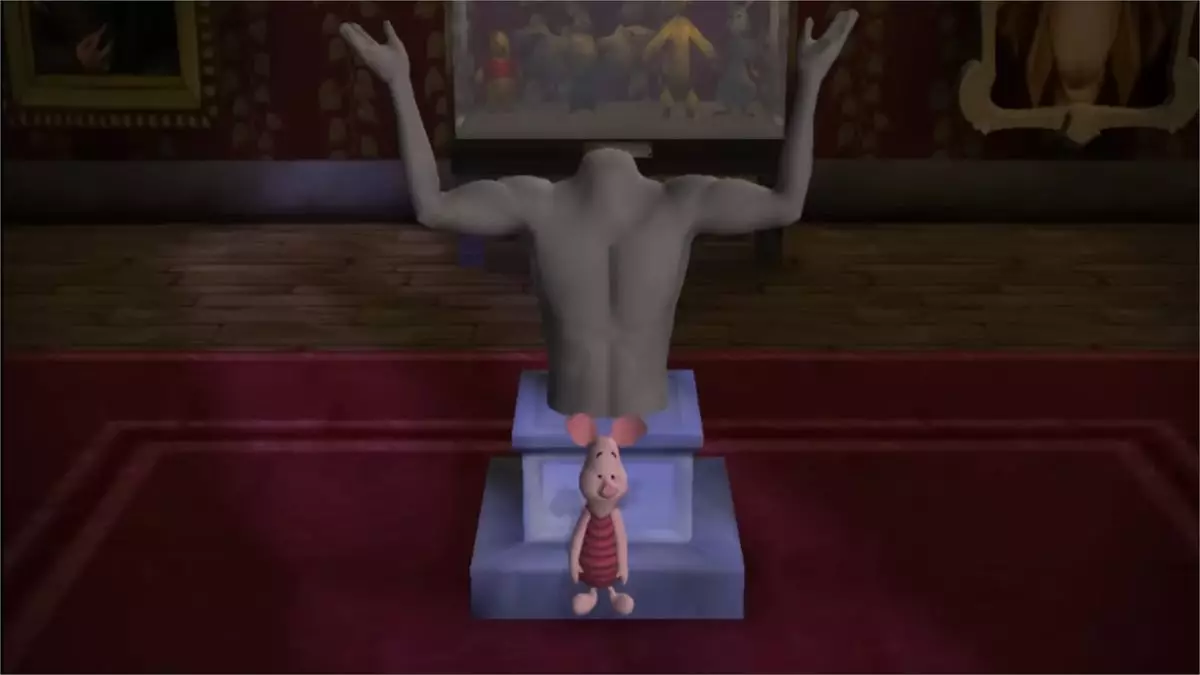In the vast landscape of video games, occasionally a title emerges that captures the public’s imagination for reasons that are at times inexplicable. Presently, “Piglet’s Big Game” has surfaced as a bizarre yet intriguing phenomenon, blending nostalgia with unexpected horror elements drawn from iconic franchises like Resident Evil and Silent Hill. This innovative approach has not only revived an old character but has also spawned a lively discussion across social media platforms, showcasing how vibrant and multifaceted the gaming community can be.
At its core, “Piglet’s Big Game” is not merely an extension of a cherished childhood character; it’s an ambitious foray into the realm of horror-comedy designed specifically for younger audiences. Pascal Stradella, the former director at Doki Denki, emphasized that the objective was not to instill fear but rather to craft an environment that evokes nervous giggles and slightly unsettling emotions. This deliberate balance is an ingenious tactic, as it allows for moments of lightheartedness amidst a backdrop of suspenseful gameplay.
The game’s fixed camera angles and atmospheric soundscapes serve as intentional nods to the horror genre, but they are executed with a child-friendly lens. The developers aimed to create a scenario where children would feel that thrilling shudder without the heavy-handed imagery typically associated with horror titles, offering a unique couch for young gamers.
One notable feature of “Piglet’s Big Game” is its health system, which diverges from traditional mechanics. Instead of a standard health bar, players manage a ‘state’ bar that navigates between three different emotional states: Normal, Worried, and Panic. This innovative approach is an intelligent mechanism that allows players, particularly younger ones, to understand the impact of fear in a more relatable way. The journey to restore Piglet’s status quo through ‘life fountains’ and checkpoints cleverly mirrors the process of overcoming fear, providing an educational twist on gameplay.
Moreover, by incorporating elements of surprise and relief, the game contrasts moments of tension with comedic interludes, making it not just an adventure but an emotional rollercoaster. This method encourages young players to engage with their emotions in a safe and entertaining environment.
The surge in popularity of “Piglet’s Big Game” is a testament to how quickly digital interactions can reshape the legacy of classic characters. As countless gamers bring the game into discussions online, the combination of nostalgia with a novel twist has led to heightened demand, driving prices on auction sites to unforeseen heights. This phenomenon raises crucial questions about the nature of gaming culture—how past properties can be reimagined to captivate new generations, and the unexpected pathways that can lead a game to viral success.
“Piglet’s Big Game” stands as a remarkable study in blending genres, gamifying emotional experiences, and navigating the tricky terrain of nostalgia and innovation. Its journey from obscurity to viral sensation illustrates the dynamic nature of gaming and the limitless potential for creativity within the industry. As we see more unconventional narratives emerge, it beckons the question: what other hidden gems could be waiting for their moment in the sun?

